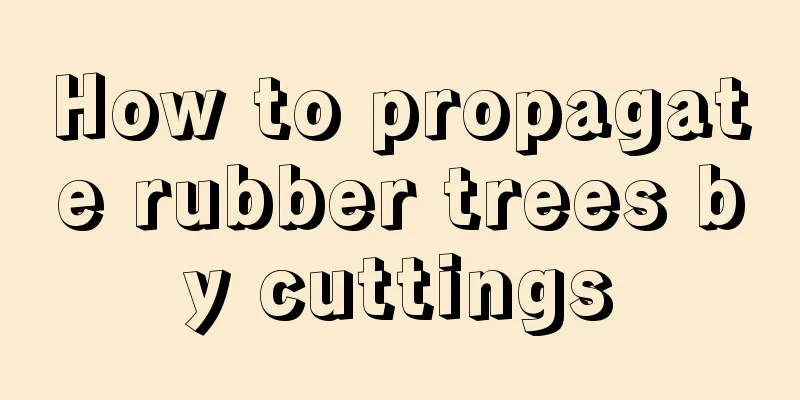How to make gardenia cuttings and how to make gardenia cuttings take root quickly

|
Gardenia has lush branches and leaves, evergreen leaves, and a strong fragrance, and is deeply loved by flower lovers. When gardenia grows well, it can be propagated by cuttings. Generally, gardenia can be propagated by cuttings in June, August, and October , but the highest survival rate of cuttings is in mid-April. Choose one-year-old strong branches, prune them, disinfect them, and then insert them into the soil. How to propagate gardenia by cuttings1. Cutting time selection The time for gardenia cuttings varies in different regions. The southern region is relatively warm, and it is recommended to do it from March to October. The north is relatively cold, and the best time is May to June. Generally, late spring and early summer are the best time for gardenia cuttings, when the climate is relatively mild and the survival rate of cuttings is high. 2. Selection of soil for cuttings It is advisable to choose fertile, loose, fertile, well-drained slightly acidic soil. Humus soil, dead leaf soil and coarse sand can be mixed before use. Disinfect the soil before use to avoid diseases in subsequent farming. 3. Selection of cuttings Choose one-year-old woody branches that are in good growth condition. Such branches are easy to root. Branches with flower buds have the highest survival rate. Clean off the leaves under the branches and leave 2 to 3 leaves. The cut branches should be disinfected with disinfectant, and can be used for cuttings after being taken out and dried. 4. Cutting operation Insert the treated branches into the soil to a depth of about 3 cm. Press the branches tightly so that they are in close contact with the soil. Water the soil in a timely manner to keep it slightly moist, and then wait patiently for the branches to take root. Gardenia cutting maintenanceAfter the cuttings are taken, it is best to place them in a place without direct sunlight for maintenance. If the branches are exposed to the sun for a long time, they will consume a lot of nutrients and water, which is not conducive to the growth of the branches and may dry up and die. The substrate should also be kept moist, and the surface should be sprayed into the wet base after it dries. |
>>: What soil is best for gardenia? What soil is best for gardenia?
Recommend
Is Aloe Vera Toxic?
1. Is it toxic? Many people know that it has grea...
How to save winter melon seeds
How to keep winter melon seeds The seeds of winte...
What fertilizer is good for loofah topdressing
Sponge gourd topdressing time When loofah is fert...
How to trim glass jade
When to prune glass jade Pruning of glass jade is...
How to grow purple bamboo to make it more vigorous?
Purple bamboo, also known as black bamboo and bla...
Cultivation methods and precautions of oil-spot lily
1. Maintenance methods 1. Soil: The preferred soi...
What fertilizer can make tea trees grow faster?
When fertilizing tea trees, you need to dig ferti...
What trees can peppers be grafted on (what rootstocks are used for grafting pepper trees)
What tree is best for grafting peppers? Peppers c...
How to prune osmanthus
1. Pruning time The time for pruning osmanthus is...
How to propagate grapes by cuttings
Cutting method Small plastic bag cutting film cov...
When is the best season to plant noodles?
Noodle vegetable , also known as wheat bottle gra...
How to water Echeveria
1. The water requirement of this plant Generally ...
How to propagate elm trees? Can they be propagated by seeds?
1. How to breed 1. Cutting propagation: Cuttings ...
How to grow hydroponic Buddhist beads so that they will bloom out of the pot?
Buddha beads are a common potted plant with thick...
Cultivation methods and precautions of calla lily
1. Maintenance methods 1. Temperature It can gene...









